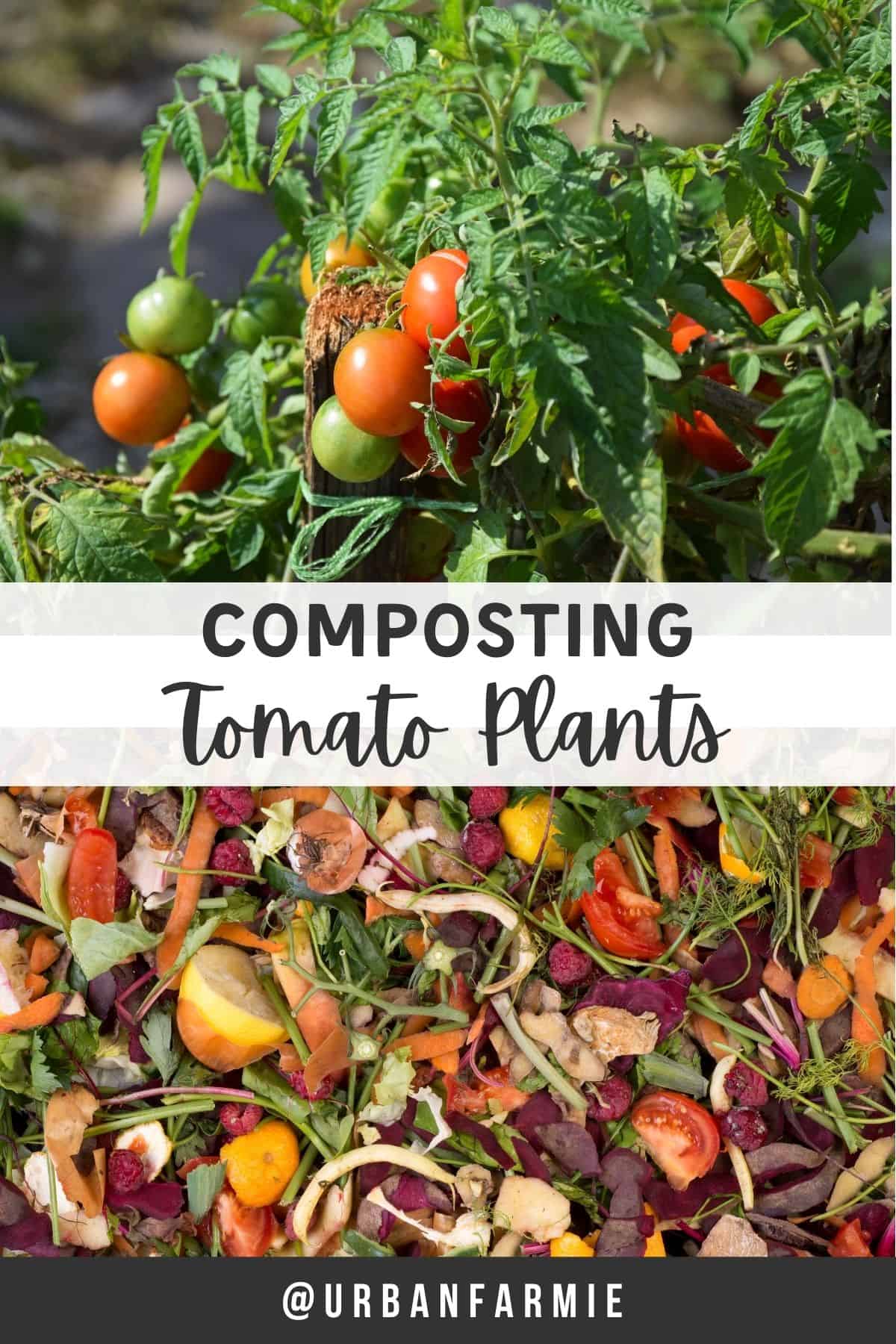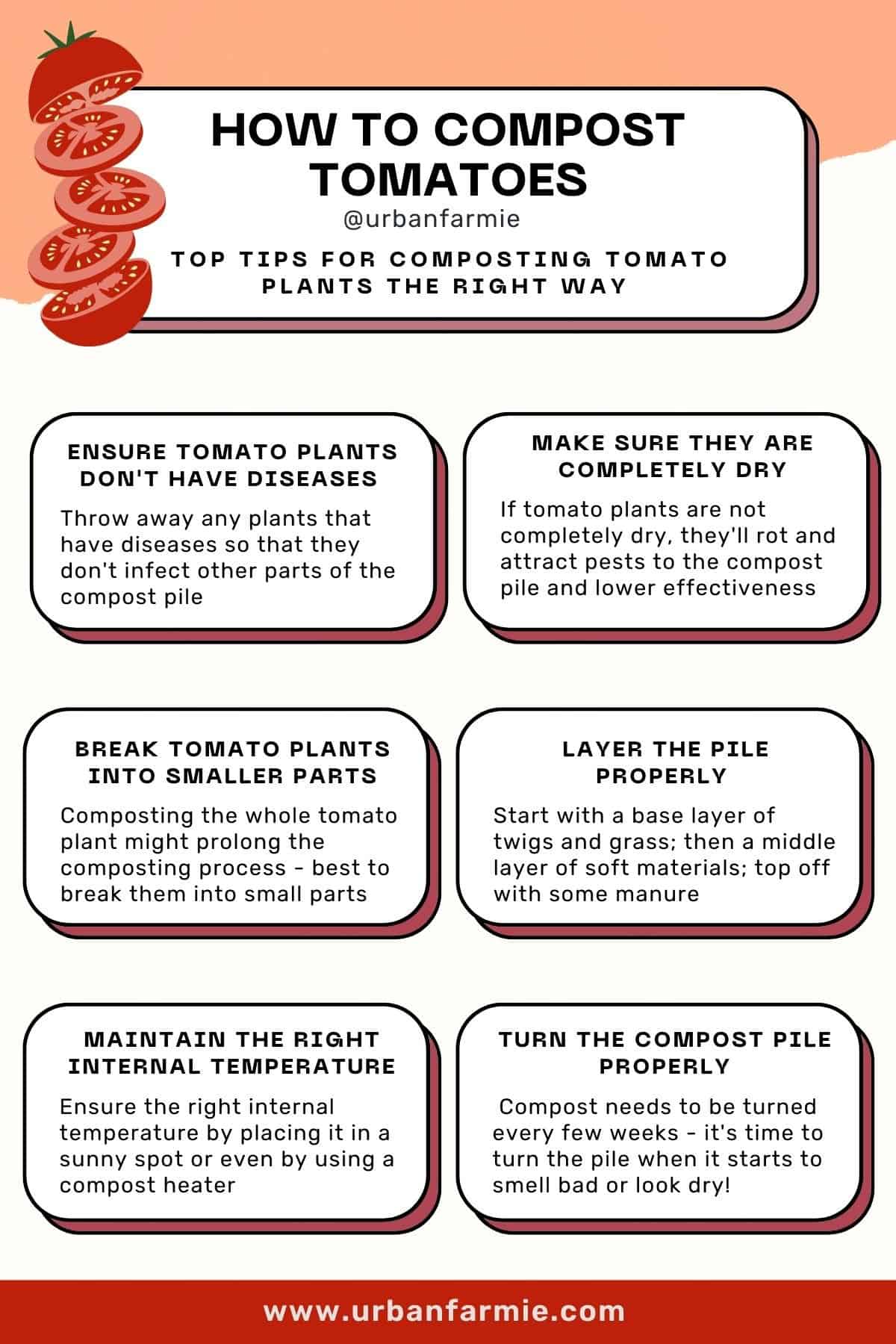Whether you're a seasoned gardener or just starting out, composting tomato plants is a great way to reduce waste, recycle organic materials, and improve your soil. However, composting tomatoes has both advantages and disadvantages. If you're interested in composting your tomato plants, keep reading for tips on how to get started!

The short answer is yes! You can compost tomato plants and use the resulting compost to fertilize your garden. However, there are some drawbacks that you'll need to be aware of (e.g., making sure they're not diseased). Read on for all the details.
Can you compost tomato plants?
Look, composting is a great way to recycle organic materials and create nutrient-rich soil for your garden. Tomato plants are a great source of nutrients and composting them is an easy way to recycle them!
They can help improve the texture of your compost, and they add organic matter to it. If you have a lot of tomato plants, or if you want to make sure that they get composted properly, you can compost them in a separate pile. This will help to speed up the process and make sure that the nutrients from the plants are properly released into the compost.
What are the risks of composting tomato plants?
There are some risks associated with composting tomato plants (but not that much more than composting any other plant).
- Composting tomato plants could spread disease. Tomato plants (perhaps more than others) are susceptible to several diseases (e.g., blight, fusarium wilt, verticillium wilt, etc.). If these diseases are present in plants being composted, they may not be killed by the composting process and could spread to other plants. This is particularly true in colder regions where diseases can overwinter.
- Tomato plants might not break down fully during composting. This could result in a finished compost that is not as effective in improving soil quality as it could be.
- The tomato plants might still have seeds. If the seeds are not killed during the composting process, they could germinate and grow "volunteer" tomato plants the following year. This is not a bad thing necessarily, but can be quite a surprise if you spot one of them in your compost pile!
For these reasons, it is important to weigh the risks and benefits of composting tomato plants before deciding to do so. As a result, if you are new to composting or new to growing tomatoes, it might be best to avoid composting them. But if you're up for learning something new, go ahead!
What are the benefits of composting tomato plants?
Composting is a great way to reduce your environmental impact and help your garden thrive. So if you've decided to go ahead and compost tomato plants, there are several benefits!
- Composting returns nutrients to the soil and reduces need for chemical fertilizers
- It can help reduce the amount of waste (and methane emissions) in landfills!
- Composting improves the structure and water retention of the soil
- Finally, it attracts earthworms and other beneficial organisms to the soil
Is it legal to compost tomato plants?
Well, that depends on where you live. In some places, it's perfectly legal to compost your tomato plants. But in other places, there might be some restrictions. For example, in California, it's legal to compost tomato plants as long as they're not diseased. So if you're thinking about composting your tomato plants, be sure to check your local laws first.
How to compost tomato plants
You should follow six key tips to ensure that you compost your tomato plants in the right way!

Ensure that the tomato plants don’t have diseases
If they have diseases, it is best to throw them away so as not to infect other plants. To ensure that the tomato plants don’t have diseases:
- Inspect the plants regularly for pests and diseases
- Remove any diseased or dead leaves
- Water the plants at the base of the plant, avoiding wetting the leaves
- Mulch the plants to help retain moisture and prevent diseases
Make sure they are completely dry
Make sure they are dry completely before you add them to the compost pile. If they're not dry, they'll start to rot and attract pests. To do this you can either wait for a sunny day and lay them out in the sun, or you can put them in an oven on low heat.
Break them into smaller parts
Don't just compost the whole plant! It is important that you break the tomato plants into smaller parts before attempting to compost them. If you were to compost the whole plant, it would take much longer for the process to be completed.
In order to break them into smaller parts, you can simply cut them up into smaller pieces with a sharp knife. Once you have done this, you will then be able to compost the tomato plants.
Layer the compost pile properly
You should layer your compost with the right ingredients to ensure that it decomposes properly. The base layer should be made up of materials like dead leaves, twigs, and grass. The second layer should be made up of softer materials like fruit and vegetable scraps, eggshells, and coffee grounds. The top layer should be made of manure, either from your own animals or purchased from a local farm.
Maintain the right internal temperature
The key to successful composting is to maintain the correct internal temperature. The ideal temperature for composting is between 55 and 65 degrees Fahrenheit. If the temperature gets too high, the compost will dry out and stop decomposing. If the temperature gets too low, the compost will become waterlogged and anaerobic, which can create odor problems.
You can use a variety of methods to maintain the correct temperature, including placing the compost pile in a sunny spot or using a compost heater. Whatever method you choose, make sure to monitor the temperature regularly to ensure that it stays within the ideal range.
Turn the pile properly
When you turn the compost pile, you're essentially aerating it and giving the microorganisms that are breaking down your organic matter the oxygen they need to do their job.
You need to turn the compost pile every few weeks, and you'll know it's time to turn the pile when it starts to smell bad or look dry. If you let the compost pile sit for too long without turning it, the process of decomposition will stall and your compost will be unusable.
If you have a small compost bin, you can turn the compost by simply taking the bin off of the ground and dumping the contents back in. For larger compost piles, you'll need to use a pitchfork to turn the pile. Wear gloves when you turn the compost, as there may be sharp objects hidden in the pile!
Once you've turned the compost, give it a good soak with a hose to add moisture back into the pile. Then, let the compost sit for a few more weeks before turning it again. With proper care, your compost should be ready to use in about two to three months.










Comments
No Comments